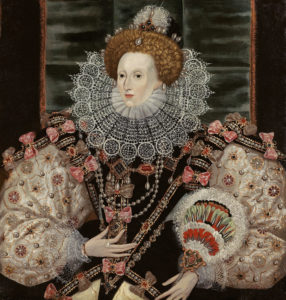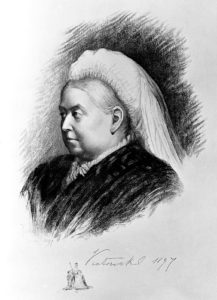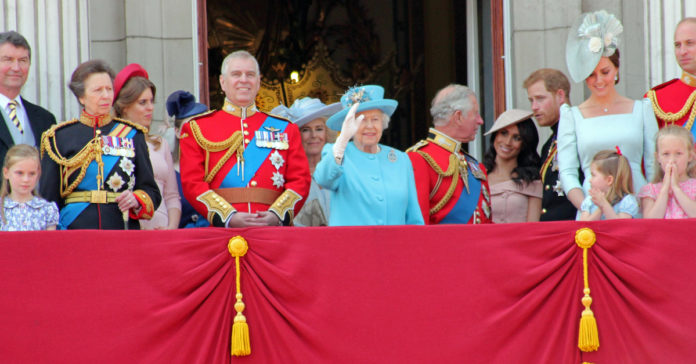Blogger Najm Al-Din argues that racism has been in the British Royal Family’s DNA throughout its history.
Meghan Markle’s interview with Oprah Winfrey has rattled the gilded cage of the British Royal Family and put paid to the myth of a racially inclusive monarchy.
The shocking revelation of someone at the Palace fretting about baby Archie’s skin colour has left the royals in retreat and much of the country’s BAME community incandescent with rage.
It doesn’t take an academic with a specialism in colonial history to acknowledge the uncomfortable truth of colourism amongst the British aristocracy, whose identity has largely been shaped by the British Empire’s interactions with the wider world.
Although the Queen and Prince Philip were not personally implicated with raising anxieties over Archie’s complexion, the brutal truth is that the presumption of white supremacy was encrypted in the cultural attitude of British royals over successive generations.
History is replete with examples from the early years of the monarchy to demonstrate the Royal Family’s contempt for non-White native populations whom they condescendingly perceived as an irredeemably inferior species, which eventually formed a wider meta-narrative on race consciousness.
Elizabeth I and the slave trade
Subscribe to our newsletter and stay updated on the latest news and updates from around the Muslim world!
Despite the ambivalent legal status of slavery during the Elizabethan period, the early British slaving voyages received the endorsement of the Queen’s distant ancestor Elizabeth I, who was a business partner of John Hawkins, a privateer and pirate dubbed the “Father of the Slave Trade,”
Lured by its pecuniary potential, both the Crown and prominent nobles including The Earl of Pembroke were direct beneficiaries of history’s most abominable institution and were heavily invested in the buccaneering adventures of sea-raiders which became central to Elizabeth’s naval strategy.

Elizabeth I effectively sanctioned the trafficking of humans by renting Hawkins the use of a slave ship (Jesus of Lubeck) for infamous expeditions which involved plundering Spanish and Portugese vessels, raiding African settlements and kidnapping and enslaving Africans. In fact, she went as far as honouring the admiral with a coat of arms and crest featuring a nude African bound with rope for his profitable voyage.
It’s also worth noting that Elizabeth I found a convenient scapegoat in Britain’s fringe black population who were blamed for mass social unrest following a devastating famine caused by lean harvests. In addition, she facilitated their banishment after her Privy Council issued an edict to public officials requiring their co-operation in the deportation of a group of “blackamoores.”
Whether this edict authorised their wholesale expulsion remains a moot point but it does implicate the Elizabethan government in a nascent slave trade, at a period in early modern England where many black Africans were deemed an existential threat for being Muslim infidels and viewed as ontologically “other.”
Charles II
It was ultimately the Stuarts who officially birthed Britain’s slave trade after a charter was granted to the Company of Royal Adventurers Trading to Africa by King Charles II, a few months after his restoration.
This formalised the creation of the Royal African Company (RAC) – in which the King was a major shareholder – which acquired a monopoly over the slave trade and adjacent islands along the west coast of Africa, stretching from the western Sahara in the north to the Cape of Good Hope in the south.
Charles II personally lent the RAC royal ships and many beneficiaries of these charters were peers and members of the royal family.
Towards the end of the 17th century and throughout much of the 18th century, the British ruling class made the moral case for Britain’s leading role in the trans-Atlantic slave trade, predicated on pseudo-scientific racism.
The British Raj
The logic underpinning the British Royal Family’s disdain for Africans also explained their ingrained prejudices towards the “brightest jewel in the crown” of the British Empire.
The Industrial Revolution would not have materialised had it not been for the de-industrialisation of the subcontinent caused by the British colonisation of India. For the British elites, there was no ethical barrier in pursuing this power grab of an entire continent. After all, many asset-strippers in the British Raj viewed the people of the Indian subcontinent as inherently primitive and whose progress was only possible if managed under the auspices of enlightened European conquerors.
There’s a reason why the likes of Lord Clive and Winston Churchill were desensitised to catastrophes such as the Bengal famine in the 1770s and in 1943. Besides the fact that these humanitarian disasters were largely exacerbated by wartime policies, in the estimation of the British establishment, India was a civilisational backwater and its people ranked abysmally on an existential scale which justified their exploitation and enslavement. Clive reserved a passionate hatred for Indian Muslims in particular, whom he described as “indolent Moors” while Churchill notoriously described Indians as “… a beastly people with a beastly religion.”
Even after the administrative responsibility of India was taken away from the predatory East India Company, the Viceroy appointed to oversee the region’s affairs on behalf of Queen Victoria ruled with the same racist conviction in a binary typology of advanced and regressive races: Indians were brutish, bestial and backward. Omg the other hand, the English were refined, cultured and a polished species, whom nature had entrusted to carry the White man’s burden.
Imperial propaganda
For too long, we have entertained the falsehood that it was only the landed gentry who harboured such racial prejudices. The fact is, British royalty was never inoculated from colour bias.
When Queen Victoria celebrated her fiftieth year on the throne, the public enthusiasm for her Golden Jubilee resulted in the production of a huge range of souvenirs and commemorative plates which became central to the imperial propaganda of the British Empire. Everything from posters and school books to exhibitions and parades cast the Empire as a civilising force with a humanising mission and clearly reflected an unwavering belief in a hierarchy of races.
A map of the world showing the Queen majestically sat on top of the globe with Boer farmers, Native Americans, Indian princes and African plantation workers gazing at her majesty in awe was published in a weekly illustrated newspaper as part of the Colonial and Indian exhibition of 1886, attracting five million visitors to the exhibition.

Credit: Wellcome Library, London.
Vintage commercials from the Victorian period such as the Pears’ Soap advert which showed a white child whitening the complexion of a semi-naked black child in a bathtub highlighted how purity and cleanliness became a metaphor for colonisation and synonymous with whiteness. It was imperial propaganda of this nature that justified Britain’s aggressive posture and jingoism towards people with a darker hue.
Everything from the dehumanisation of Africans, systematic violence of English slave traders, the commercial exploitation of India and genocide of Native Americans by early Virginia settlers were all justified in the name of bringing civilisation to the African, Asiatic and non-European savages. One should never interpret the westward expansion of English explorers, the emergence of the plantation economy across the Atlantic or the imperial exploits in the subcontinent as divorced from the Monarch’s blessing.
The current Royal Family has never publicly acknowledged Britain’s complicity in these unpardonable crimes against humanity. It is more than plausible to assume that the reason for their silence is because they broadly identify with the racial animus and psychological make-up of their predecessors and have inherited the racialised systems of thought and values which have been hardwired in their inner circle across generations.
So it’s time to call a spade a spade. A racist Eurocentric narrative anchored the national identity of not only the Royal Family but also millions of ordinary Britons for centuries, where whiteness was equated with prestige, civilisation and social capital. If royal concerns with melanin and the reinforcing of a colour complex proves one thing, it is that old habits die very hard.
Tokenism
It reeks of historical amnesia when Musharraf Hussain, the Queen’s deputy lord lieutenant in Nottinghamshire, goes the extra mile to defend the Royal Family from accusations of racism, without at least factoring the European imperial legacy which established a power structure that pathologised black communities for centuries.
Equally nauseating is to see Muslims bubbling with excitement when someone of royal descent is invited to their place of worship.
Despite the royal family’s egregious history vis-à-vis communities of colour, instrumental role in the dismemberment of the Ottoman Khilafah and formalities obliging the household to endorse ongoing wars against the Ummah, our servile committees and spineless Imams rarely miss an opportunity to ingratiate the royals such as Kate and William, who were recently greeted with a traditional curtsy during a visit to East London Mosque and treated with the kind of fawning deference we have come to expect from some senior figureheads in the British Muslim community.
At a time when the national conversation on race and identity is forcing many to recalibrate their understanding of allegiance and belonging, it is a moral imperative for Muslims to enlist themselves in the fight against racial injustice.






















